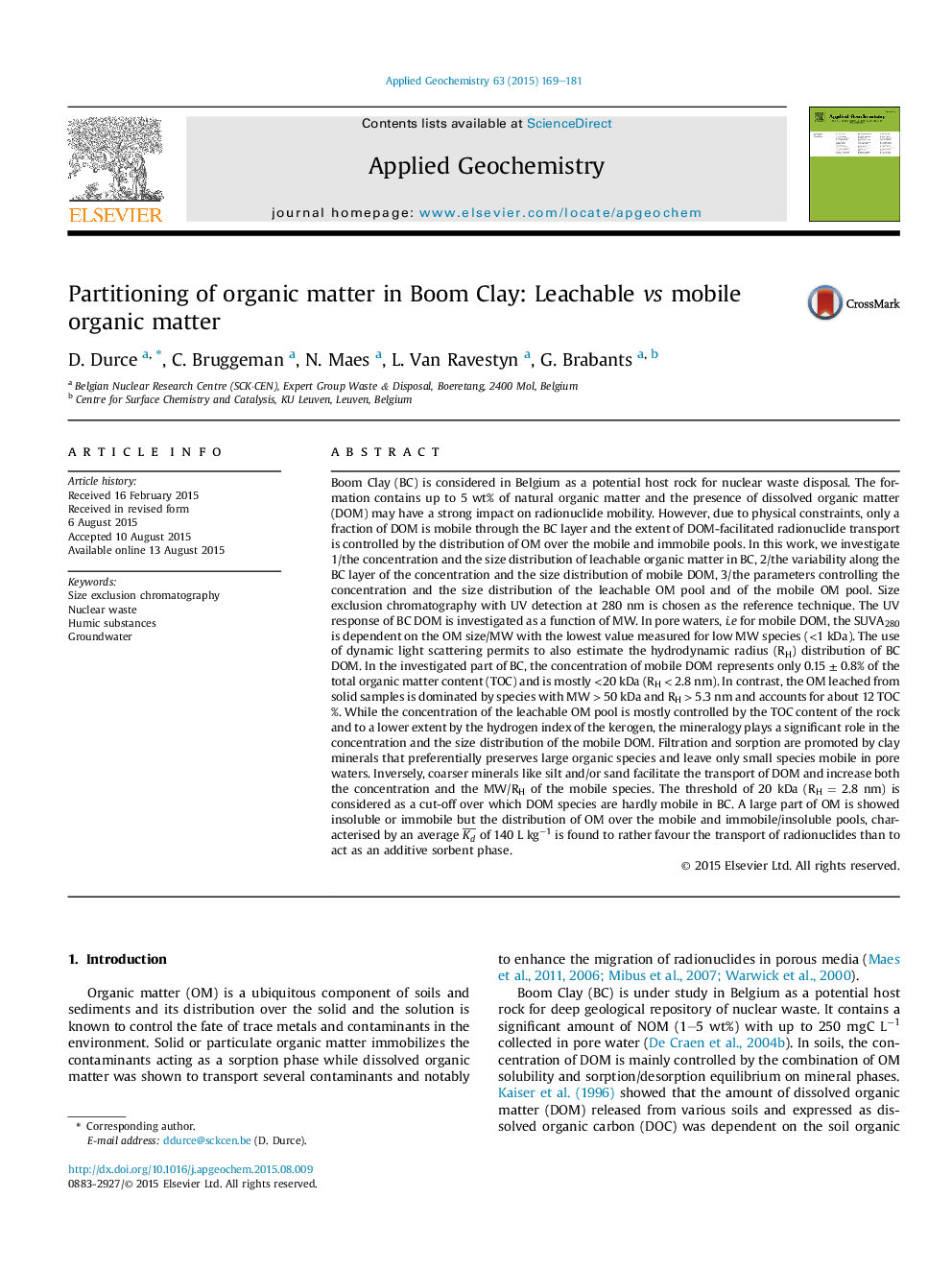| کد مقاله | کد نشریه | سال انتشار | مقاله انگلیسی | نسخه تمام متن |
|---|---|---|---|---|
| 6334938 | 1620228 | 2015 | 13 صفحه PDF | دانلود رایگان |
عنوان انگلیسی مقاله ISI
Partitioning of organic matter in Boom Clay: Leachable vs mobile organic matter
ترجمه فارسی عنوان
تقسیم مواد آلی در بوم کلین: ماده آلایشی قابل شستشو نسبت به موبایل
دانلود مقاله + سفارش ترجمه
دانلود مقاله ISI انگلیسی
رایگان برای ایرانیان
کلمات کلیدی
اندازه کروماتوگرافی حذف، زباله هسته ای، مواد هومیک، آب های زیرزمینی،
موضوعات مرتبط
مهندسی و علوم پایه
علوم زمین و سیارات
ژئوشیمی و پترولوژی
چکیده انگلیسی
Boom Clay (BC) is considered in Belgium as a potential host rock for nuclear waste disposal. The formation contains up to 5 wt% of natural organic matter and the presence of dissolved organic matter (DOM) may have a strong impact on radionuclide mobility. However, due to physical constraints, only a fraction of DOM is mobile through the BC layer and the extent of DOM-facilitated radionuclide transport is controlled by the distribution of OM over the mobile and immobile pools. In this work, we investigate 1/the concentration and the size distribution of leachable organic matter in BC, 2/the variability along the BC layer of the concentration and the size distribution of mobile DOM, 3/the parameters controlling the concentration and the size distribution of the leachable OM pool and of the mobile OM pool. Size exclusion chromatography with UV detection at 280 nm is chosen as the reference technique. The UV response of BC DOM is investigated as a function of MW. In pore waters, i.e for mobile DOM, the SUVA280 is dependent on the OM size/MW with the lowest value measured for low MW species (<1 kDa). The use of dynamic light scattering permits to also estimate the hydrodynamic radius (RH) distribution of BC DOM. In the investigated part of BC, the concentration of mobile DOM represents only 0.15 ± 0.8% of the total organic matter content (TOC) and is mostly <20 kDa (RH < 2.8 nm). In contrast, the OM leached from solid samples is dominated by species with MW > 50 kDa and RH > 5.3 nm and accounts for about 12 TOC%. While the concentration of the leachable OM pool is mostly controlled by the TOC content of the rock and to a lower extent by the hydrogen index of the kerogen, the mineralogy plays a significant role in the concentration and the size distribution of the mobile DOM. Filtration and sorption are promoted by clay minerals that preferentially preserves large organic species and leave only small species mobile in pore waters. Inversely, coarser minerals like silt and/or sand facilitate the transport of DOM and increase both the concentration and the MW/RH of the mobile species. The threshold of 20 kDa (RH = 2.8 nm) is considered as a cut-off over which DOM species are hardly mobile in BC. A large part of OM is showed insoluble or immobile but the distribution of OM over the mobile and immobile/insoluble pools, characterised by an average Kd¯ of 140 L kgâ1 is found to rather favour the transport of radionuclides than to act as an additive sorbent phase.
ناشر
Database: Elsevier - ScienceDirect (ساینس دایرکت)
Journal: Applied Geochemistry - Volume 63, December 2015, Pages 169-181
Journal: Applied Geochemistry - Volume 63, December 2015, Pages 169-181
نویسندگان
D. Durce, C. Bruggeman, N. Maes, L. Van Ravestyn, G. Brabants,
